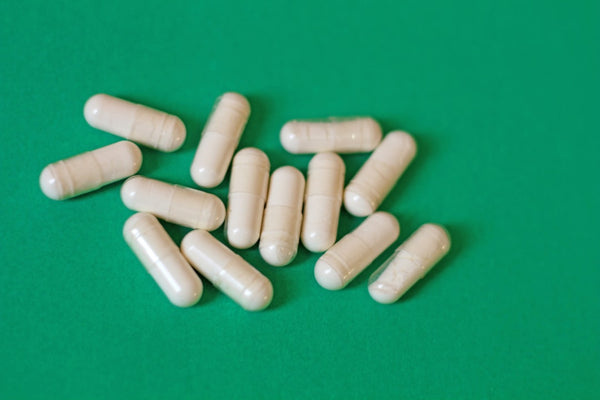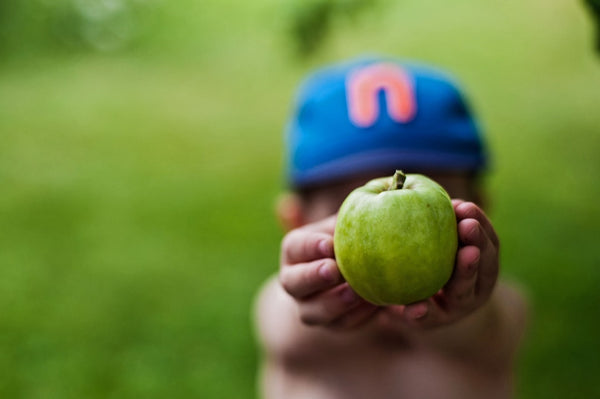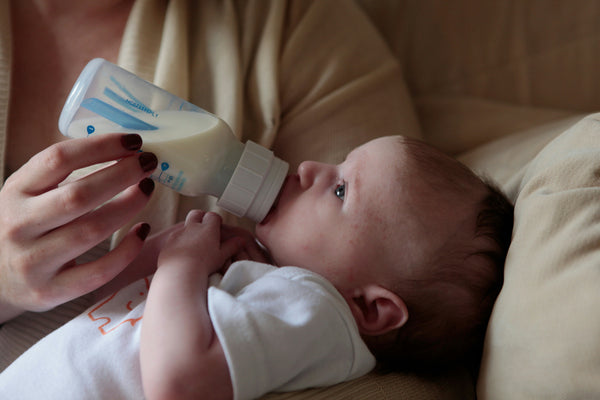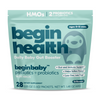Fiber-Rich Finger Foods for Baby Led Weaning
share this article
 Offering fiber-rich finger foods while starting solids can make a big difference for your baby’s digestion and long-term gut health. As your little one explores new foods, their digestive system is also adjusting and constipation is a common challenge. Adding fiber in age-appropriate ways can help keep things moving while doing baby led weaning.
Offering fiber-rich finger foods while starting solids can make a big difference for your baby’s digestion and long-term gut health. As your little one explores new foods, their digestive system is also adjusting and constipation is a common challenge. Adding fiber in age-appropriate ways can help keep things moving while doing baby led weaning.
However, many fruits and veggies have tricky textures, and too much fiber at once can lead to gas or tummy discomfort for your baby. But with the right approach, fiber-rich foods can be served safely and gently.
Let’s walk through why fiber is so important, easy ideas for fiber-rich finger foods, and helpful tips for introducing them in a way that supports your baby’s digestion.
Why Do Babies Need Fiber?
Although there is no exact daily fiber recommendation for babies ages 6 to 12 months, it’s still important to include fiber in their diet.
Not only does fiber help prevent constipation, but it also supports the development of a healthy gut microbiome. This ecosystem of good bacteria in the digestive system plays a key role in digestion, immunity, and long-term health.
Introducing fiber-rich foods early also helps babies become familiar with these textures and flavors which can help them develop a preference for fiber-rich foods later in life.
Best Fiber-Rich Finger Foods for Baby Led Weaning
These foods are gentle on digestion, densely packed with fiber, and developmentally appropriate for babies starting solids.
Pears
Serve cooked or very ripe soft pears in large vertical spears or mashed into oatmeal. Avoid offering pear juice before 12 months.
Raspberries
Raspberries are packed with fiber (about 8 grams per cup). Serve mashed on their own, or mix into yogurt or oatmeal.
Lentils
Lentils are packed with fiber but also act as a great source of iron, an important nutrient while starting solids. Serve soft scoopable lentil dishes or mix with other foods like soft vegetables to allow your baby to mash and scoop them together.
Beans
Any variety of beans (chickpeas, black beans, navy beans, etc) are a great source of iron and fiber for babies. Puree or mash them for scooping or thinly spread on a tortilla or piece of toast.
Chia Seeds
Beyond being a high fiber source, chia seeds also have omega-3 fatty acids for brain health and development. Offer pre-soaked chia seeds in milk, yogurt, or oatmeal to make chia seed pudding. Avoid serving dry chia seeds.
Avocado
Avocado is a great superfood for babies because it’s densely packed with fiber and omega-3 healthy fats. Serve soft vertical spears for your baby to grab with a fist. If the avocado is too slippery, try coating it in hemp seeds, bread crumbs, or finely pulsed coconut for them to get a better grip.
Banana
Choose ripe, soft bananas, which are gentler on digestion. Serve halved or cut into long spears that are easy for babies to hold.
Tips for Safely Serving Fiber-Rich Foods
Serving high-fiber foods during baby led weaning doesn’t need to be complicated! These tips can help you introduce fiber in a way that’s safe and gentle on your baby’s tummy:
-
Use the “squish test” to safely serve fruits and vegetables. Make sure all fruits and vegetables are ripe enough or cooked well enough that they can easily be squished with light pressure between your fingers. This mimics your baby’s little gums and can prevent choking.
-
Start with small serving sizes. When introducing a new food, it’s generally a good idea to start with 1-2 tablespoons and encourage more if your baby is interested. Especially with fiber, too much fiber all at once can overwhelm the baby’s digestive system and cause tummy aches and gas.
-
Offer plenty of fluids. Babies need extra hydration as fiber increases in their diet. Continue offering breast milk, formula, or small sips of water (max 4-8 ounces) to keep digestion smooth
Summary
Fiber-rich finger foods are a great addition to your baby-led weaning approach. They support digestion, introduce new textures and flavors, and can support long-term gut health. Offer foods like berries, legumes, pears, avocado, and chia seeds in a developmentally safe way for your baby to get the fiber they need.
















